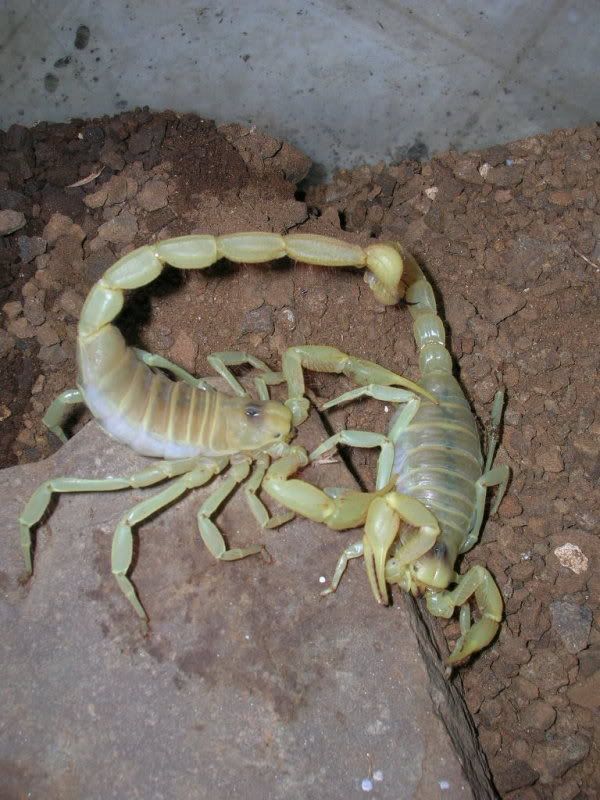- Joined
- Jul 13, 2009
- Messages
- 780
Why would a male scorpion need to look different from a female? they don't see each other, the male doesn't have ornaments that the female is attracted to. The only thing i can think is that with some centruroides species the male is thinner, so maybe it could have survival advantages, or mating advantages. maybe the thinner ones move around better?


